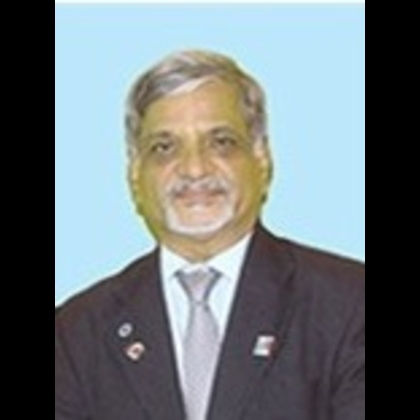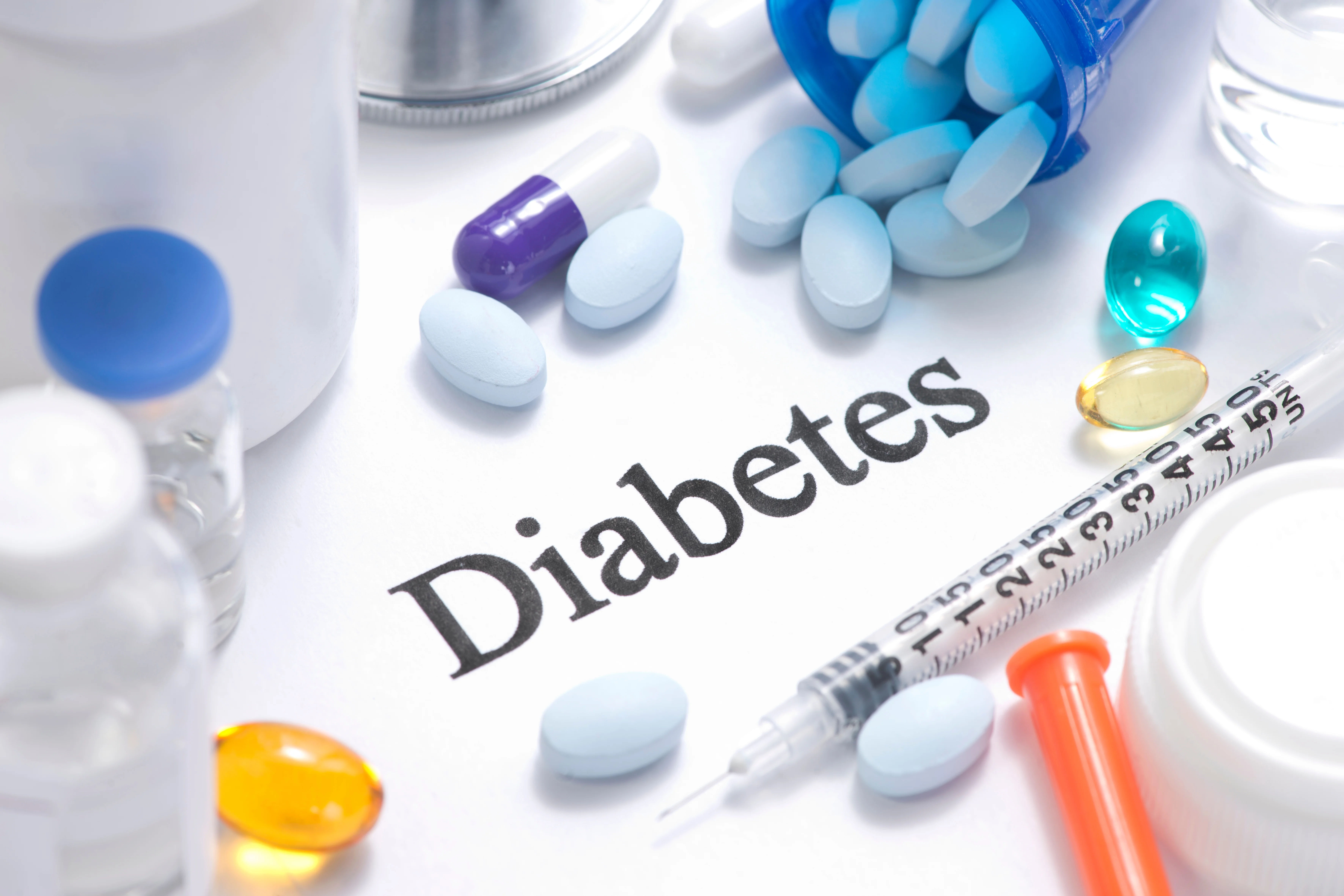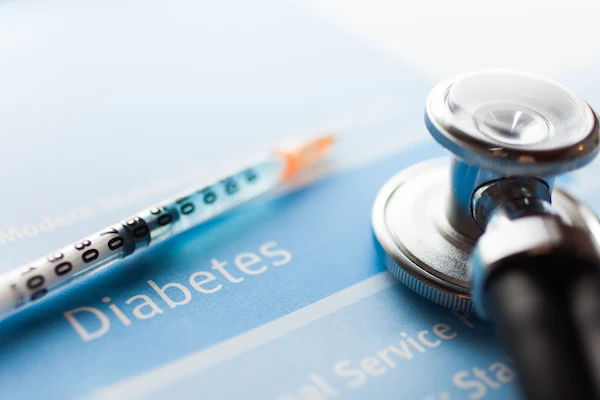Guide to Diabetes And Liver All You Need To Know
Protect your liver! This complete guide explains the critical connection between diabetes and liver disease (including fatty liver) and provides essential advice for care.

Written by Dr. Mohammed Kamran
Reviewed by Dr. Rohinipriyanka Pondugula MBBS
Last updated on 24th Oct, 2025

Introduction
Diabetes and the liver are more connected than most people realize. Your liver stores and releases glucose, helps process fats and proteins, and detoxifies the body—jobs that become harder when blood sugars are high. Over time, diabetes can raise the risk of fatty liver disease, inflammation, scarring (fibrosis), cirrhosis, and even liver cancer. The good news? With the right information and daily habits, you can protect both your blood sugar and your liver.
In this guide to diabetes and liver health, you’ll learn how diabetes affects the liver, the most common liver problems to watch for, the tests you may need, and simple, sustainable changes that make a big difference. We’ll cover food choices that support both blood sugar and liver function, safe medications, exercise strategies, and when to see a doctor. You’ll also find practical tips for special situations like type 1 diabetes, pregnancy, and cirrhosis.
Whether you’re newly diagnosed or managing diabetes for years, this is your roadmap to a healthier liver and a healthier you.
What Most Top Pages Cover—and What They Miss?
What top-ranking “diabetes” pages include?
- Definitions and types of diabetes (type 1, type 2, gestational)
- Symptoms, diagnosis (fasting glucose, HbA1c), and complications
- Lifestyle advice: diet, physical activity, weight management
- Medications and monitoring
- Prevention and living well with diabetes
What do they often miss about the liver?
- The high prevalence of fatty liver in type 2 diabetes (over half of people) and the newer terms MASLD and MASH
- Practical guidance on which diabetes medications also help the liver
- How and when to screen for liver fibrosis using simple scores like FIB-4
- What to do if liver enzymes are chronically elevated
- The nuances of managing diabetes when cirrhosis is present
How does this guide fill the gaps?
- Clear, step-by-step testing plan (what, when, how often)
- Food and activity choices that benefit both conditions
- Evidence-based overview of medications that help or may need caution
- Real-life examples and a yearly monitoring checklist
Consult a Top General Physician
Diabetes and Your Liver: The Overlooked Connection
The liver’s role in blood sugar control
- Stores glucose as glycogen and releases it between meals
- Produces new glucose (gluconeogenesis) when needed
- Processes fats and detoxifies harmful substances
How diabetes disrupts liver function?
- Insulin resistance drives fat buildup in liver cells, leading to metabolic dysfunction–associated steatotic liver disease (MASLD), formerly called NAFLD
- Chronically high insulin and glucose increase liver fat, oxidative stress, and inflammation
- Over time, some people develop MASH (steatohepatitis), fibrosis, and cirrhosis
Why does this matter to you?
- People with type 2 diabetes have a 2–3x higher risk of advanced liver scarring than those without diabetes.
- Even when liver disease is silent, cardiovascular risk rises—treating both diabetes and liver health reduces heart attacks and strokes.
- The liver affects medication choices, weight loss responses, and hypoglycemia risk.
Unique insight
Think of your liver as your “glucose thermostat.” If it’s overwhelmed with fat, it leaks extra sugar into your blood even when you’re not eating—making glucose control harder. Fixing the liver often makes diabetes easier to manage.
Common Liver Problems in Diabetes: MASLD, MASH, and Beyond
MASLD and MASH: the spectrum
- MASLD: fat in >5% of liver cells with metabolic risk (e.g., diabetes, obesity)
- MASH: fat plus inflammation and cell injury—can lead to fibrosis and cirrhosis
- Prevalence: about 55–70% of people with type 2 diabetes have MASLD; 20–30% may have significant fibrosis.
Other liver issues linked to diabetes
- Cirrhosis and portal hypertension (advanced scarring)
- Hepatocellular carcinoma (liver cancer), risk increases with diabetes and cirrhosis
- Gallstones (more common with rapid weight loss or insulin resistance)
- Viral hepatitis coexisting with diabetes (worsens outcomes)
- In type 1 diabetes, “glycogenic hepatopathy”: enlarged liver from glycogen excess when sugars swing high/low
Alcohol and “double hits”
- Even moderate alcohol can amplify liver fat and inflammation in the presence of diabetes
- If you drink, keep it light and infrequent; many with MASLD are advised to avoid alcohol.
Unique insight
If you’ve been told you have “fatty liver,” assume it matters. Silent liver fat today can be tomorrow’s driver of insulin resistance, higher insulin doses, and cardiovascular risk.
Symptoms and Red Flags: When Diabetes Signals Liver Trouble
Often silent—what to look for
- No symptoms in early MASLD/MASH
- Fatigue, right upper abdominal discomfort, or mild nausea
- Elevated ALT/AST on routine labs, or fatty liver seen on ultrasound
Red flags needing prompt evaluation
- Jaundice, dark urine, pale stools, itchy skin
- Abdominal swelling, ankle edema
- - Easy bruising, confusion/sleep reversal (signs of advanced liver disease)
- Unexplained unintentional weight loss or persistent abdominal pain
If symptoms persist beyond two weeks, consult a doctor online with Apollo 24|7 for further evaluation.
How diabetes can mask liver issues?
- Poor appetite or weight loss might be attributed to glucose changes but could signal progression
- Normal ALT/AST do not exclude significant fibrosis; structured assessment is key
Unique insight
Liver disease progression can be invisible on standard blood tests. That’s why noninvasive fibrosis scores and imaging matter even when you feel well.
Testing and Diagnosis: From HbA1c to FibroScan
Baseline tests if you have diabetes
- HbA1c, fasting glucose, lipid profile
- Liver function tests (ALT, AST, ALP, bilirubin), platelet count
- Hepatitis B/C screening if risk factors present
Apollo 24|7 offers a convenient home collection for tests like HbA1c, lipid profile, and liver function tests.
Screening for liver fibrosis: the FIB-4 first
- FIB-4 uses age, AST, ALT, and platelet count; cost-free and quick
- Typical thresholds: <1.3 suggests low risk; >2.67 suggests high risk of advanced fibrosis (age-adjusted cutoffs apply)
- Low risk: repeat every 1–3 years; intermediate/high: consider transient elastography (FibroScan) or referral
Imaging and advanced tools
- Ultrasound detects fatty liver but not fibrosis well
- FibroScan measures liver stiffness (fibrosis) and CAP (fat content)
- MRI-PDFF quantifies liver fat accurately (research/selected cases)
- When uncertainty remains, hepatology referral and sometimes biopsy
Suggested monitoring schedule
- Annual: HbA1c, LFTs, FIB-4, lipid profile
- Every 1–3 years: FibroScan if intermediate risk; more often if high risk
- Cirrhosis: ultrasound and AFP every 6 months for liver cancer screening
Unique insight
Ask your clinician to calculate your FIB-4 from routine labs. It’s an easy way to catch serious liver scarring early—before complications develop.
Food Choices That Work for Both Diabetes and Liver Health
Eating pattern principles
- Emphasize whole, minimally processed foods
- Aim for a Mediterranean-style pattern: vegetables, legumes, nuts, whole grains, fish, olive oil
- Moderate carbohydrates with fiber focus; pair carbs with protein and healthy fats
What to eat more of?
- Non-starchy vegetables (leafy greens, crucifers, peppers)
- Lean proteins (fish, poultry, tofu, beans), yogurt
- Whole grains (oats, quinoa, brown rice), mixed with legumes to slow glucose rise
- Healthy fats (extra-virgin olive oil, avocado, nuts, seeds)
- Coffee (2–3 cups/day may lower liver disease risk if tolerated)
What to limit or avoid?
- Sugary drinks, fruit juices, refined carbs (white bread, sweets)
- Processed meats and ultra-processed snacks
- Excess fructose (large amounts of sweetened beverages)
- Alcohol, especially with MASLD/MASH
Example day (balanced for glucose and liver)
- Breakfast: Greek yogurt with chia, berries, and a sprinkle of nuts
- Lunch: Lentil and quinoa salad with mixed vegetables and olive oil–lemon dressing
- Snack: Carrot sticks and hummus; unsweetened coffee or tea
- Dinner: Grilled salmon, sautéed greens, small portion of brown rice
- Dessert: Fresh fruit or a square of dark chocolate (70%+)
Unique insight
For many, changing the “when” is as powerful as the “what.” Keeping an overnight fast of 12–14 hours (if safe for your diabetes plan) can reduce liver fat and improve insulin sensitivity.
Safe and Effective Medications: What Helps the Liver—What to Watch
Diabetes medications with liver benefits
- GLP-1 receptor agonists (e.g., semaglutide, liraglutide) reduce liver fat and support weight loss; evidence suggests improvement in MASH activity
- SGLT2 inhibitors (e.g., empagliflozin, dapagliflozin) modestly lower liver fat and ALT, plus strong heart/kidney benefits
- Pioglitazone improves NASH histology, especially in type 2 diabetes; watch for weight gain and edema
Neutral or context-dependent
- Metformin: excellent for diabetes but not a specific MASH treatment; still foundational therapy unless contraindicated
- Insulin: often necessary; in cirrhosis, increased hypoglycemia risk—dosing must be individualized
- Statins: safe in MASLD/MASH and reduce cardiovascular events; mild ALT elevation isn’t a reason to stop unless significant symptoms
Use with caution
- High-dose vitamin A, anabolic steroids, some herbal supplements (e.g., green tea extract in high doses, kava) can harm the liver
- Avoid unnecessary acetaminophen combinations; follow label limits, especially with alcohol use
Talk to your clinician
Medication choices can do double duty—lowering glucose while reducing liver fat. Review your options, especially if your FIB-4 is elevated or ultrasound shows fatty liver.
Lifestyle Upgrades: Weight Loss, Exercise, and Sleep
Weight loss targets that change the liver
5% weight loss reduces liver fat; 7–10% often resolves MASH; ≥10% can regress fibrosis in many
Even without large weight loss, fitness gains improve insulin sensitivity
Exercise prescription
- Aerobic: 150–300 minutes/week moderate intensity (e.g., brisk walking, cycling)
- Resistance training: 2–3 sessions/week targeting major muscle groups
- Practical approach: 10–15 minute brisk walks after meals to blunt glucose spikes
Sleep and stress matter
- 7–9 hours of quality sleep supports glucose and appetite hormones
- Stress-reduction techniques (breathing exercises, yoga, mindfulness) can reduce emotional eating and cortisol-driven glucose rises
Unique insight
If time is tight, “exercise snacks” work: three 10-minute walks (after each meal) often beat one long session for glucose control and post-meal liver fat handling.
Living with Both Conditions: Monitoring, Screening, and Prevention
Your yearly plan
- Quarterly to biannual HbA1c, depending on control
- Annual LFTs, lipids, kidney tests, FIB-4
- Eye exam, foot exam, blood pressure and vaccines (hepatitis B if not immune)
Preventing progression
- Optimize glucose, blood pressure, and LDL cholesterol (statins are beneficial)
- Vaccinations: hepatitis A and B if not immune; flu and COVID-19 as recommended
- Alcohol moderation or avoidance with MASLD/MASH
HCC screening and cirrhosis care
- With cirrhosis: ultrasound ± AFP every 6 months
- Watch for decompensation signs: ascites, confusion, GI bleeding—urgent medical care
When to seek care?
Persistently elevated liver enzymes >6 months, rising FIB-4, or new symptoms
If your condition does not improve after trying these methods, book a physical visit to a doctor with Apollo 24|7.
Unique insight
Treat cardiovascular risk aggressively. In MASLD with diabetes, heart disease remains the top threat, and the same steps that protect your liver also protect your heart.
Special Situations: Type 1 Diabetes, Pregnancy, and Cirrhosis
Type 1 diabetes
- Glycogenic hepatopathy: reversible liver enlargement from glucose variability—tightening glucose ranges helps
- MASLD can still occur with weight gain/insulin resistance; lifestyle steps apply
Gestational diabetes and liver
- Intrahepatic cholestasis of pregnancy is a separate condition; discuss persistent itching or jaundice promptly
- Postpartum: screen for type 2 diabetes; prioritize sustainable diet and activity to reduce later MASLD risk
Managing diabetes in cirrhosis
- Higher hypoglycemia risk due to reduced glycogen stores and impaired gluconeogenesis
- Prefer short-acting insulins and careful titration; metformin may be continued in compensated cirrhosis with clinician oversight; avoid in decompensated disease [2]
- Nutritional approach: avoid prolonged fasting; small frequent meals; nighttime protein snack to prevent muscle loss
Unique insight
In cirrhosis, “muscle is medicine.” Resistance training and adequate protein (unless contraindicated) help maintain muscle mass, which improves insulin sensitivity and outcomes.
Myths vs. Facts about Diabetes and the Liver
- Myth: “Normal liver enzymes mean my liver is fine.”
Fact: Many people with advanced fibrosis have normal ALT/AST. Use FIB-4 and FibroScan to check risk. - Myth: “I should stop my statin because of fatty liver.”
Fact: Statins are safe in MASLD and reduce cardiovascular risk—the top cause of death in MASLD. - Myth: “Metformin treats fatty liver.”
Fact: It is a cornerstone for diabetes but hasn’t shown consistent MASH histology benefits. Other agents and lifestyle changes are needed. - Myth: “A detox will cleanse my liver.”
Fact: Your liver detoxifies itself. Focus on sustainable nutrition, activity, sleep, and medical therapy.
Sample 3-Day Meal Ideas for Diabetes and Liver Health
Day 1
- Breakfast: Veggie omelet, small whole-grain toast, coffee
- Lunch: Chickpea salad bowl with tomatoes, cucumbers, olives, olive oil
- Dinner: Baked chicken thigh, roasted Brussels sprouts, sweet potato wedge
- Snack: Apple with peanut butter
Day 2
- Breakfast: Overnight oats with chia, cinnamon, walnuts, blueberries
- Lunch: Grilled tofu and mixed veggie stir-fry over cauliflower rice
- Dinner: Shrimp and vegetable stew, side salad with EVOO
- Snack: Yogurt with pumpkin seeds
Day 3
- Breakfast: Smoothie (unsweetened soy milk, spinach, frozen berries, flaxseed)
- Lunch: Turkey lettuce wraps with avocado, bell peppers, salsa
- Dinner: Lentil soup, whole-grain roll, arugula salad
- Snack: Pear and a few almonds
Portion and carb tips
Aim for half plate non-starchy veg, quarter protein, quarter smart carbs
Pair carbs with protein/fat to soften glucose rise
Conclusion
Your liver and your diabetes don’t live in separate worlds—they talk to each other every day. When the liver accumulates fat, it pumps extra glucose into your bloodstream and becomes inflamed; when blood sugars run high, the liver’s workload increases. The cycle is real, but it’s also reversible for many people.
Start with the basics: get your baseline labs, calculate your FIB-4, and ask whether you need a FibroScan. Move toward a Mediterranean-style way of eating that prioritizes vegetables, lean proteins, whole grains, and healthy fats, while cutting sugary drinks and ultra-processed foods. Build a routine of brisk post-meal walks and two days of strength training. Discuss medications that pull double duty—controlling glucose and helping your liver—with your clinician. Keep an eye on your yearly screening plan and act early if red flags appear.
Small steps add up. A 7–10% weight loss, better sleep, and the right treatment plan can dramatically improve both liver and diabetes outcomes. If your condition does not improve after trying these methods, book a physical visit to a doctor with Apollo 24|7; and consider their home collection for HbA1c, lipid panel, and liver function tests to make follow-up easier. Protecting your liver is one of the smartest moves you can make for long-term diabetes health—and for your heart, brain, and energy, too.
Consult a Top General Physician
Consult a Top General Physician

Dr. Rajib Ghose
General Physician/ Internal Medicine Specialist
26 Years • MBBS
Kolkata
B Ghose Foundation Doctor's Chamber, Kolkata
(50+ Patients)

Dr. Shesham Srinidhi
General Practitioner
5 Years • MD(physician)
Hyderabad
Apollo 24|7 Clinic, Hyderabad
(150+ Patients)

Dr. Rajib Ghose
General Physician/ Internal Medicine Specialist
25 Years • MBBS
East Midnapore
VIVEKANANDA SEBA SADAN, East Midnapore

Dr. Chethan T L
General Physician/ Internal Medicine Specialist
5 Years • MBBS, MD, DNB (General Medicine)
Bengaluru
Apollo Medical Center, Marathahalli, Bengaluru

Dr. S V Kulkarni
General Physician/ Internal Medicine Specialist
42 Years • MD (Medicine), F.A.C.P. , F.A.C.M. , F.G.H. , F.I.C.P. , F.D.I. , F.G.S.I., Advance Fellowships in Geriatrics, Industrial Health, Diabetes, Thyroid Diseases & Global Health
Mumbai
Apollo Hospitals CBD Belapur, Mumbai
Consult a Top General Physician

Dr. Rajib Ghose
General Physician/ Internal Medicine Specialist
26 Years • MBBS
Kolkata
B Ghose Foundation Doctor's Chamber, Kolkata
(50+ Patients)

Dr. Shesham Srinidhi
General Practitioner
5 Years • MD(physician)
Hyderabad
Apollo 24|7 Clinic, Hyderabad
(150+ Patients)

Dr. Rajib Ghose
General Physician/ Internal Medicine Specialist
25 Years • MBBS
East Midnapore
VIVEKANANDA SEBA SADAN, East Midnapore

Dr. Chethan T L
General Physician/ Internal Medicine Specialist
5 Years • MBBS, MD, DNB (General Medicine)
Bengaluru
Apollo Medical Center, Marathahalli, Bengaluru

Dr. S V Kulkarni
General Physician/ Internal Medicine Specialist
42 Years • MD (Medicine), F.A.C.P. , F.A.C.M. , F.G.H. , F.I.C.P. , F.D.I. , F.G.S.I., Advance Fellowships in Geriatrics, Industrial Health, Diabetes, Thyroid Diseases & Global Health
Mumbai
Apollo Hospitals CBD Belapur, Mumbai
More articles from Diabetes
Frequently Asked Questions
Can fatty liver cause diabetes or just make it worse?
Liver fat drives insulin resistance, which can precede and worsen type 2 diabetes. Reducing liver fat through weight loss and activity improves insulin sensitivity and glucose control (fatty liver and insulin resistance).
Are statins safe if I have diabetes and fatty liver?
Yes. Statins are safe in MASLD/MASH and reduce cardiovascular risk—the leading cause of death in fatty liver disease. Mild ALT elevation alone isn’t a reason to stop; discuss specifics with your clinician.
Which diabetes medications help fatty liver most?
GLP-1 receptor agonists and SGLT2 inhibitors reduce liver fat and ALT, with added heart/kidney benefits. Pioglitazone improves NASH histology in type 2 diabetes. Metformin remains foundational for diabetes but isn’t a specific NASH therapy.
How often should I screen for liver fibrosis if I have diabetes?
Many guidelines suggest annual labs and FIB-4. Low-risk results can be repeated every 1–3 years; intermediate/high risk should prompt FibroScan or specialist referral.
What’s the best diet for diabetes and fatty liver?
A Mediterranean-style diet rich in vegetables, legumes, nuts, whole grains, fish, and olive oil, with limited sugary drinks and refined carbs, is linked to improved liver fat and better glycemic control.



